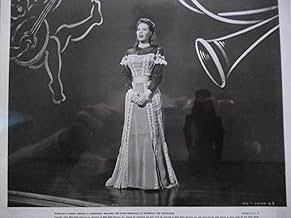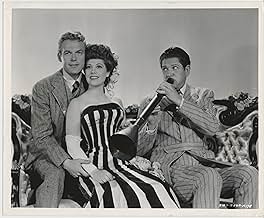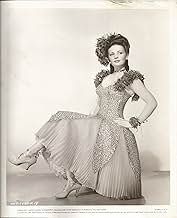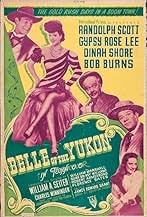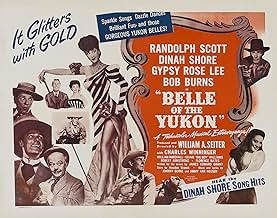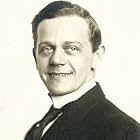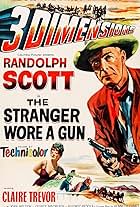In the Yukon mining town of Malemute, saloon owner John Calhoun and an assortment of shady characters are after the bags of gold dust the miners deposit in the new bank managed by Calhoun hi... Read allIn the Yukon mining town of Malemute, saloon owner John Calhoun and an assortment of shady characters are after the bags of gold dust the miners deposit in the new bank managed by Calhoun himself.In the Yukon mining town of Malemute, saloon owner John Calhoun and an assortment of shady characters are after the bags of gold dust the miners deposit in the new bank managed by Calhoun himself.
- Nominated for 2 Oscars
- 2 nominations total
Guinn 'Big Boy' Williams
- Sheriff Mervin Maitland
- (as Guinn Williams)
Eddie Acuff
- Miner
- (uncredited)
Foncilla Adams
- Girl
- (uncredited)
Walter Bacon
- Miner
- (uncredited)
John Barton
- Barfly
- (uncredited)
Hank Bell
- 1st Bartender
- (uncredited)
- Director
- Writers
- All cast & crew
- Production, box office & more at IMDbPro
Storyline
Did you know
- Quotes
Belle De Valle: The day you turn platonic is the day that wolves become vegetarians.
- ConnectionsReferenced in The A-Team: Water, Water Everywhere (1983)
Featured review
Supposedly set in the old Klondike at the time of the gold rush; we get a jokey opening narration similar to the prologue three years earlier to 'Louisiana Purchase' (1941) advising us in advance that we will be getting glossy escapism, not gritty realism. We see little of the film's hinterland setting beyond a brief shot of what looks like a black & white photograph of a couple of mountains; and the story could just as easily have been set in a speakeasy during prohibition or a contemporary New York nightclub. However, 'Belle of Chicago' or 'Belle of Brooklyn' wouldn't have had quite the same ring - or accommodated Don Loper's colossal saloon set in which most of the action takes place; and which along with his costumes and choreography (dressed in Technicolor by veteran cameraman Ray Rennahan) look as if they consumed about half the film's budget. All those chorus girls in glossy red lipstick flinging their legs in the air would also have been more likely to have encountered problems with the Hays Office in a contemporary setting.
No one character ever seems to be the focus of the film; but being the tallest - as well as being Randolph Scott - a smiling Scott just about qualifies as the film's central hero. Although in the title role, Gypsy Rose Lee functions more as Dinah Shore's female buddy; and with their long faces, matching blood red lipstick, alarmingly corseted dresses and vertical hairstyles could pass for sisters. The 'action' tends to consist mainly of the two girls singing about their burgeoning romantic passions, until there is finally a conclusion appropriate to a western when Robert Armstrong (who alone appears to be acting in something more rugged) organises a bank robbery to end the film with something passing for action.
Some of the sets are sufficiently stylised to have possibly helped ten years later to inspire those for 'Red Garters'; or Vienna's saloon in 'Johnny Guitar'. The film's most eye-popping use of colour is saved for the final scene when the chorus are shot from below energetically dancing the Can-Can, although their pale green dresses flicking about their rose red petticoats manage to look remarkably like costumes from a two-colour rather than a three-strip Technicolor production.
No one character ever seems to be the focus of the film; but being the tallest - as well as being Randolph Scott - a smiling Scott just about qualifies as the film's central hero. Although in the title role, Gypsy Rose Lee functions more as Dinah Shore's female buddy; and with their long faces, matching blood red lipstick, alarmingly corseted dresses and vertical hairstyles could pass for sisters. The 'action' tends to consist mainly of the two girls singing about their burgeoning romantic passions, until there is finally a conclusion appropriate to a western when Robert Armstrong (who alone appears to be acting in something more rugged) organises a bank robbery to end the film with something passing for action.
Some of the sets are sufficiently stylised to have possibly helped ten years later to inspire those for 'Red Garters'; or Vienna's saloon in 'Johnny Guitar'. The film's most eye-popping use of colour is saved for the final scene when the chorus are shot from below energetically dancing the Can-Can, although their pale green dresses flicking about their rose red petticoats manage to look remarkably like costumes from a two-colour rather than a three-strip Technicolor production.
- richardchatten
- Oct 4, 2016
- Permalink
- How long is Belle of the Yukon?Powered by Alexa
Details
- Runtime1 hour 23 minutes
- Aspect ratio
- 1.37 : 1
Contribute to this page
Suggest an edit or add missing content



